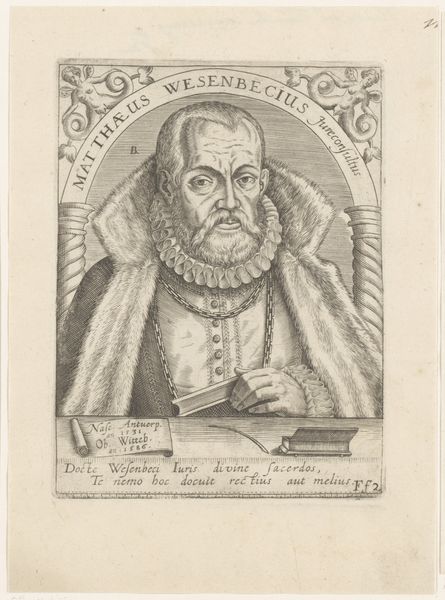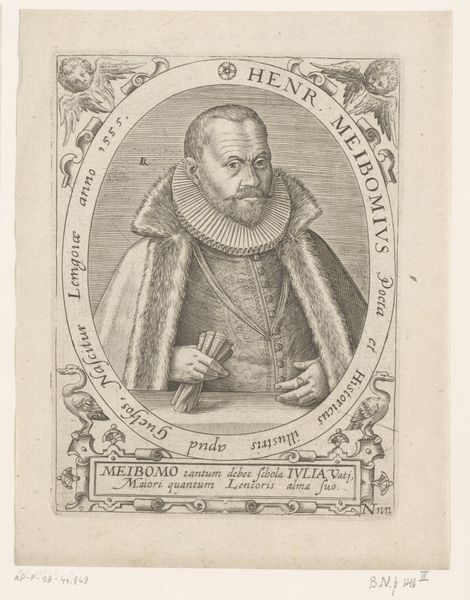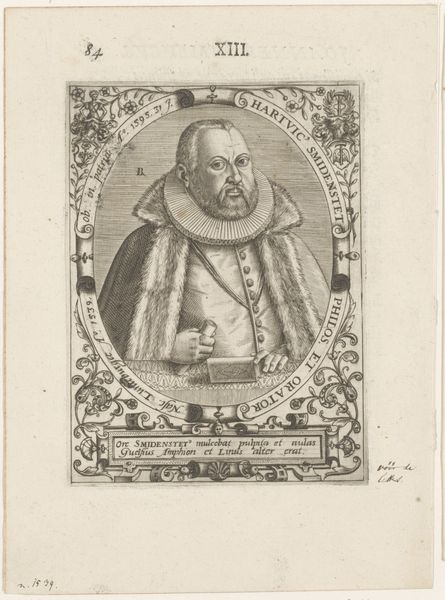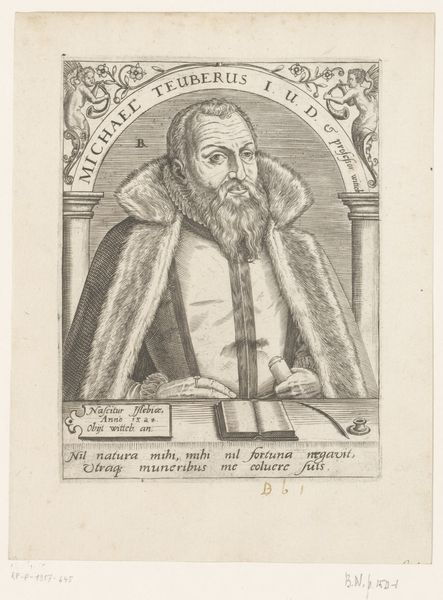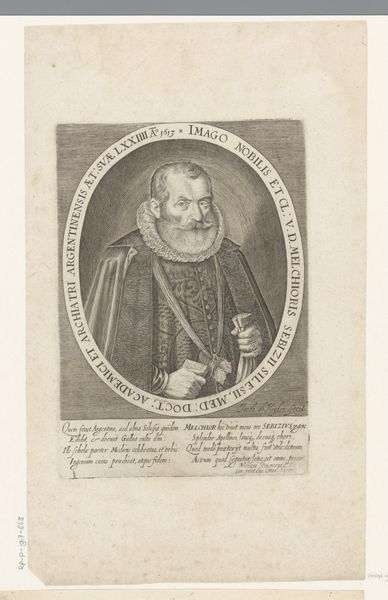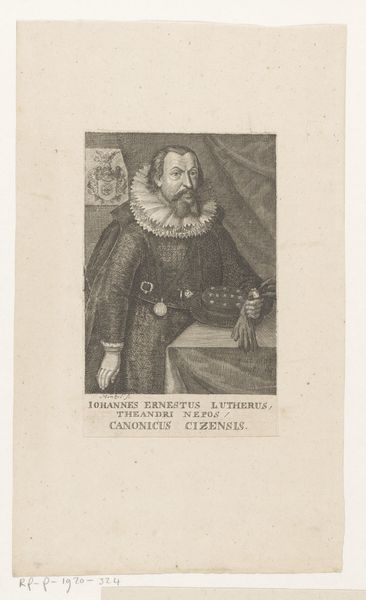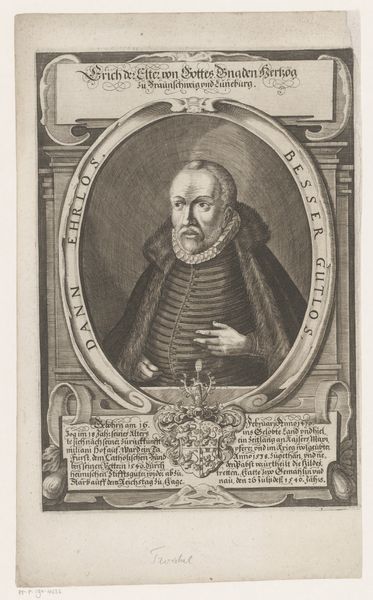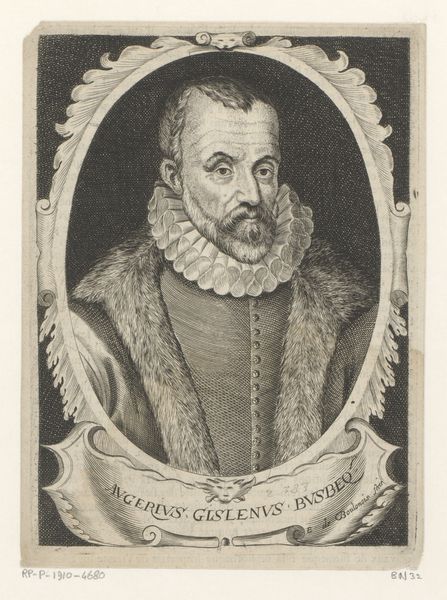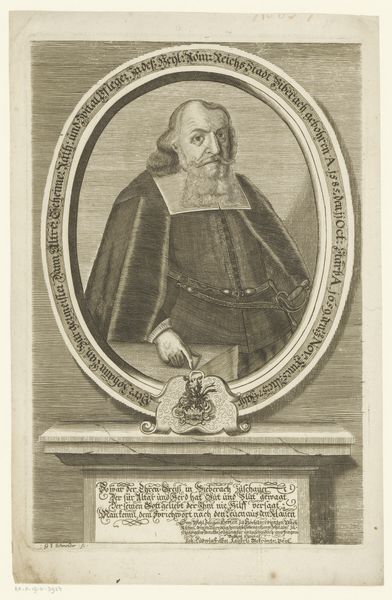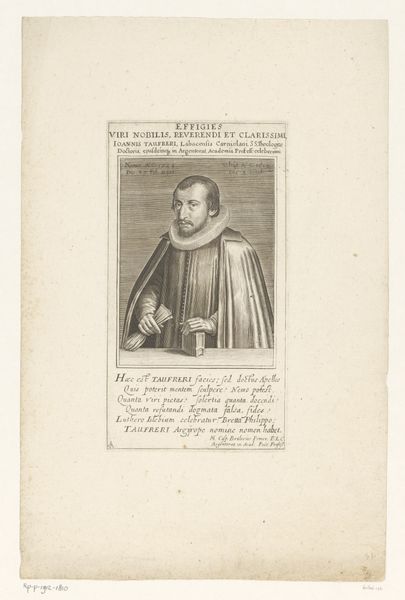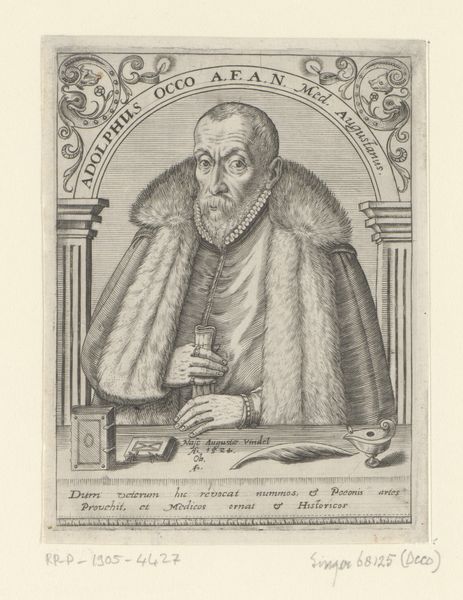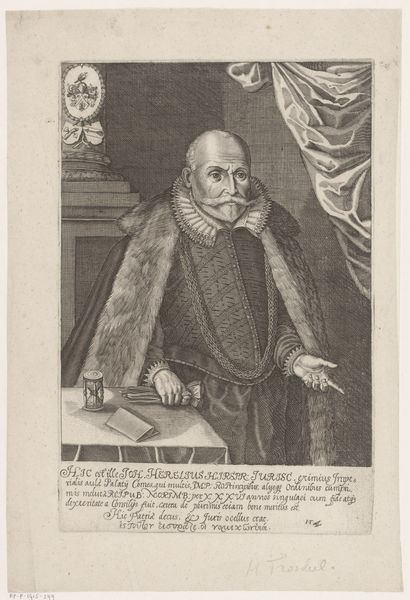
print, engraving
#
portrait
#
baroque
# print
#
old engraving style
#
caricature
#
history-painting
#
engraving
Dimensions: height 186 mm, width 139 mm
Copyright: Rijks Museum: Open Domain
Editor: So, this is Edme de Boulonois’s 1682 engraving, "Portret van Matthias Wesenbeck," held at the Rijksmuseum. I find the level of detail achieved through the engraving process fascinating. What strikes you most about this print? Curator: Immediately, I’m drawn to the relationship between labor and luxury evidenced in the image. Consider the sheer manual skill demanded in the engraving itself versus the overt display of wealth through Wesenbeck's fur-lined robes and the opulent ruff. How are these connected, do you think? Editor: I hadn't considered the connection so directly, but it's plain to see. Both the creation of the print and Wesenbeck's garments require considerable resources and specialized skill, indicative of a specific social hierarchy. Do you think the medium of print itself democratizes the portrait, despite the obvious display of wealth within the image? Curator: That’s a crucial point. While engraving allows for reproduction, and thus potentially wider access, we still need to consider who controlled the means of production. Who commissioned this piece, who was the target audience, and what statement are they trying to make about the value of craft and capital? Editor: The name of Boulonois displayed so proudly implies a certain self-awareness by the artist, too. Maybe even a negotiation of their own worth, set against that of the wealthy sitter. Curator: Precisely. The material presence of the engraving—the paper, the ink, the very lines themselves—speak to the economic realities and power dynamics of artistic creation and consumption in 17th-century Holland. How might the act of collecting prints like this contribute to a burgeoning merchant class asserting its status? Editor: Thinking about it that way makes the portrait so much more dynamic than simply a depiction of a notable person. It’s a record of complex social relationships manifested in ink and paper. Curator: Indeed. By shifting our focus from the subject to the object itself, we unlock layers of meaning about the economic and social fabric of its time.
Comments
No comments
Be the first to comment and join the conversation on the ultimate creative platform.
